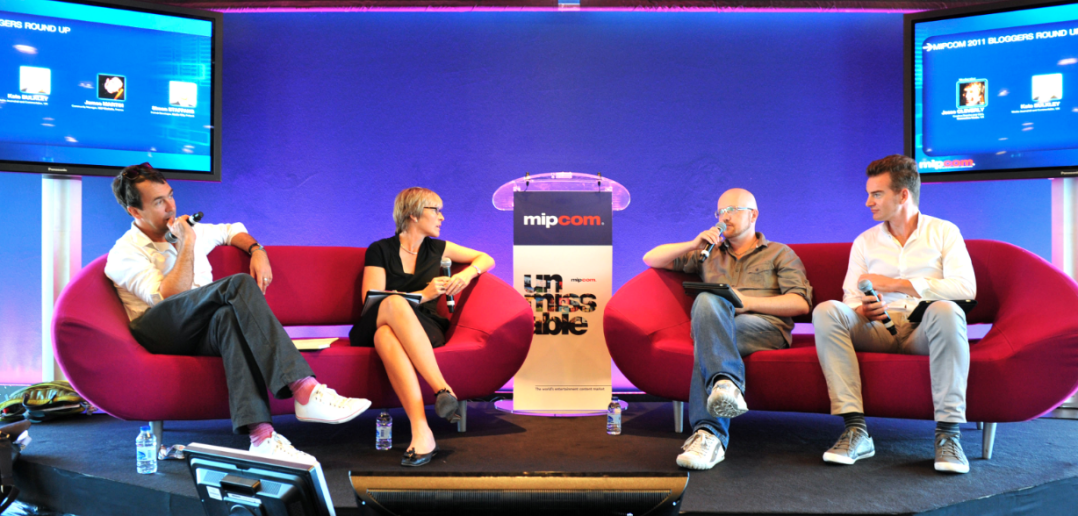Jesse Cleverly hit the stage once again to moderate a panel of familiar MIP faces. And the first question he posed had to do with overall value: where is it in a media landscape that’s become so fractured?
“Identify the goal,” Staffans said. “What is the goal we are looking for?”
Bulkley hit a hot button. “The goal at the end is money, isn’t it? I would hope that a lot of the people here will figure out how to not just give their stuff to the Netflixes and Youtubes of the world, but how to get leverage out of these guys.” She cited Apple, referring presumably its iTunes store with rigorous rules of engagement, as an example of a tough road walked by media players.
Martin pointed out these new players don’t have to be the ultimate rulemakers, even if you adopt many of their qualities. Cable network Rogers in Canada one-upped Netflix when the latter data-capped broadband use for streaming films with other services than its own VOD offering.
Transmedia was also a hot topic this week, the panel agreed. Said Martin: “The most important thing is for everyone to understand what transmedia is: when you develop something from outset for several platforms, and their stories criss-cross.”
Bulkley elaborated. “Transmedia and multiplatform are different. Most big guys are still talking multiplatform which is largely promotional.” On the other hand, “transmedia is more about who’s going to be producing really cool things.” She used the example of the premiere of Touch, which extends to online and webisodes.
“There is a conflict between stated intentions and what people are really doing,” Martin said. Great shows like Breaking Bad still aren’t transmedia, so do you necessarily have to be?
Sometimes the audience will give you cues, as Cleverly pointed out. Mad Men didn’t start out “transmedia”; it became that way when fans started tweeting as Mad Men characters, a phenomenon AMC first tried squashing before embracing.
So do you provide that element or do others?
Beyond this, the two most dominant topics of the session included transparency and advertising. Staffans managed to tie both topics together nicely.
“In TV, we’re gonna see the same social media mistakes that have occurred in advertising.” In this way, the ad industry serves as a model for media.
For hairier situations on platforms where you feel pressure to play by users’ rules, such as Facebook, it’s best to be clear. “Sometimes you just have to tell people up-front that you if can’t talk about something, you just can’t,” Staffans pointed out.
With regard to advertising in general, Bulkley pointed out the obvious: advertisers are dripping with cash. “Advertisers are eager to invest in media, so we have to learn to take advantage without making our content too advertorial,” she said.
Finally, panelists reflected on the most influential deals of the season.
Bulkley immediately pointed to the Facebook and Spotify liaison in the US. It is clearly great for Spotify, which wins itself an instant audience, but all the same “you can’t get Spotify in the States unless you have Facebook. Who’s running the show?”
Martin looked, ironically, to the lack of the right kinds of deals on Youtube. “We have yet to see them do a deal with content producers that enables them to make money beyond ads, the potential of which is small.”
And Staffans observed that FremantleMedia has decided to re-prioritise user-generated content. The industry is now “acknowleging the world is at this social place, and we need to go there as well,” he said.




